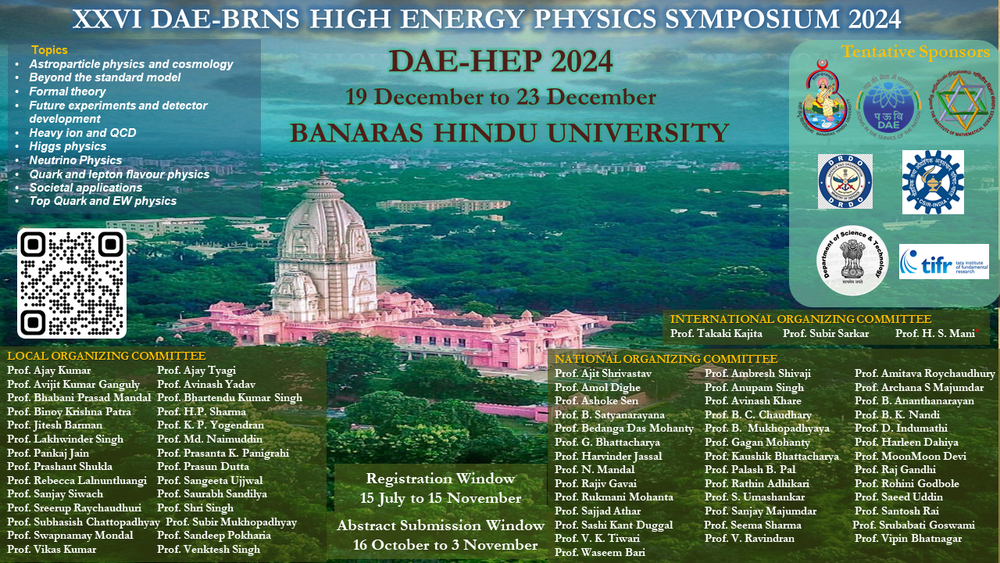Speakers
Description
The Electron Ion Collider (EIC) is an approved project in the USA, to be built at Brookhaven National Laboratory (BNL) with a joint effort from Jefferson Lab (JLab). In the EIC, the contribution of the quarks and gluons to the macroscopic properties of nucleon and nuclei will be studied in an unexplored kinematic phase space. The key physics questions, viz. emergence of the hadronic mass, the full 3D tomography of the partons inside the nucleon, the region dominated by gluons and its saturation will be studied with unprecedented accuracy. EIC will, therefore, be the ultimate facility to study precision QCD physics. The physics programme of EIC calls for strict requirements in the collider and detector construction.
Highly polarised (~70%) electrons, protons and light nuclei and unpolarized heavy nuclei will be collided at a wide centre of mass energy (20-141 GeV). To achieve high statistical accuracy within one year of physics data taking, a high luminosity of 1034 cm2s-1 will be required. On the detector side, an almost hermetic detector is needed to provide nearly 4π coverage with efficient tracking, calorimetry and particle identification capabilities.
The ePIC detector at EIC, is capable of supporting the entire EIC physics programme. Particle identification is central to many EIC physics channels. In the forward or hadron going direction, where high momentum final state hadrons are to be identified a dual radiator RICH (dRICH) is considered to perform π/K/P identification from a few hundreds of MeV and up to 50 GeV without any gap in the momentum range. The detector covers a wide pseudorapidity range. Apart from hadron identification the dRICH provides excellent pion rejection to boost the calorimeter and tracking systems to identify scattered electrons from the Deep Inelastic Scattering like event reconstruction up to 15 GeV. The dRICH is based on focusing technology, where spherical mirror segments focus the Cherenkov photons generated in the aerogel and gas radiator to an array of SiPM sensors.
In this work, we highlight the performance of the ePIC dRICH detector by estimating the separation power from the reconstructed Cherenkov angle and resolution of Cherenkov photon ring resolution. The numbers are extracted from a simulation study using the full ePIC simulation framework. We also present the results of our analysis with two different types of aerogel with n=1.019 and n.1.026 and compare them based on their performance in the context of the PID capability of the dRICH.
| Field of contribution | Experiment |
|---|

